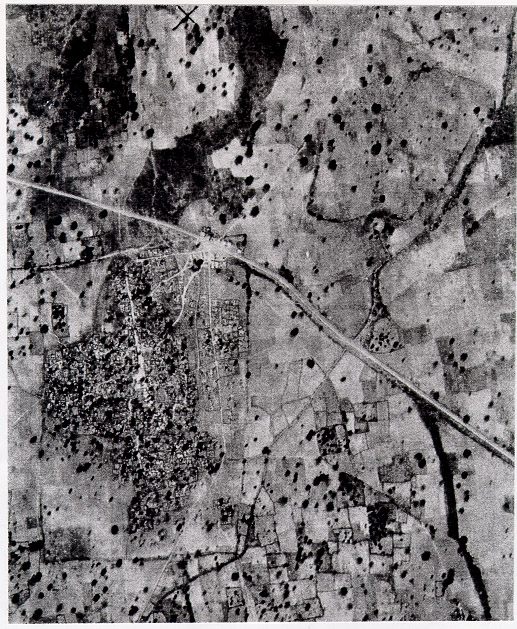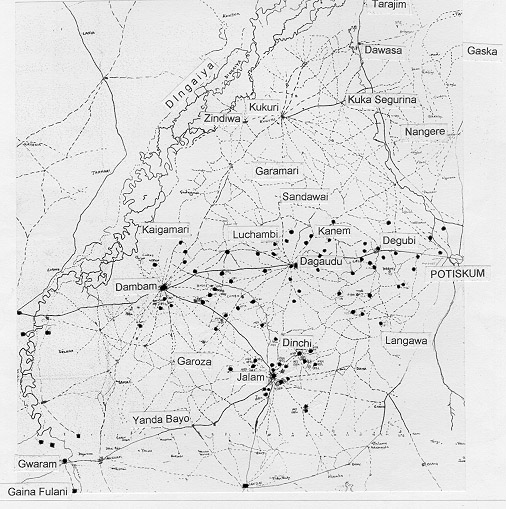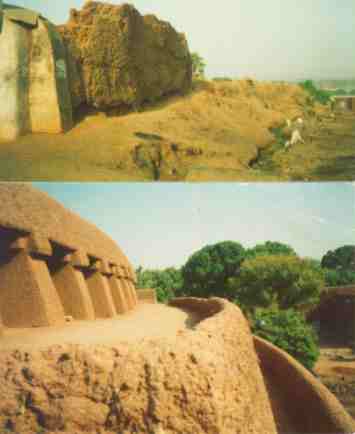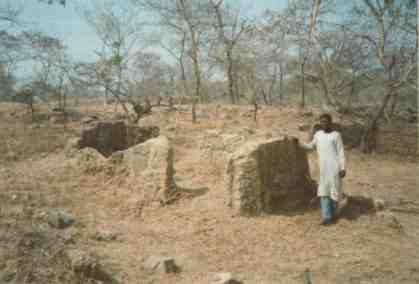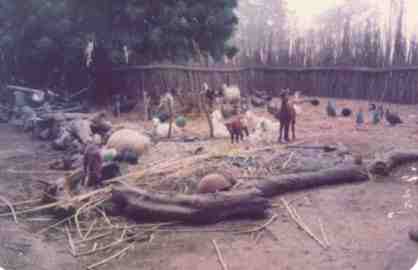| Kano City walls:
Above - in situ ruins in the early
1990's. The Kano City walls were considered the most impressive monument
in West Africa in 1903; but they have become severely eroded today, with
borrow-pits for housing encroaching from both sides, and the nouveaux
riches building ostentatious houses right across the old wall.
Most gateways have had to be modified to allow modern traffic; but at least
one gateway may now be restored authentically with some sections of the
wall alongside.
Below: Reconstruction of the Kano City
wall at the Museum of Traditional Nigerian Architecture in Jos, where higher
rainfall conditions have meant constant repair work. The upper parapet
was manned by archers and riflemen using loopholes in the wall; whilst
cavalry moved rapidly around inside the walls to ensure protection at the
weakest spots. The walls were built entirely of tubali - pear-shaped,
sun-dried mud blocks to create a 24 km long, 20m high perimeter. |
